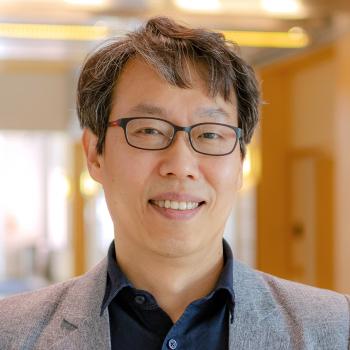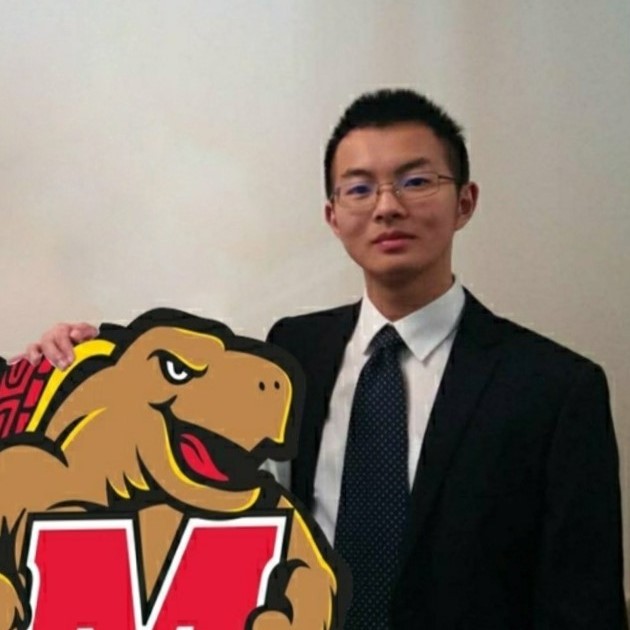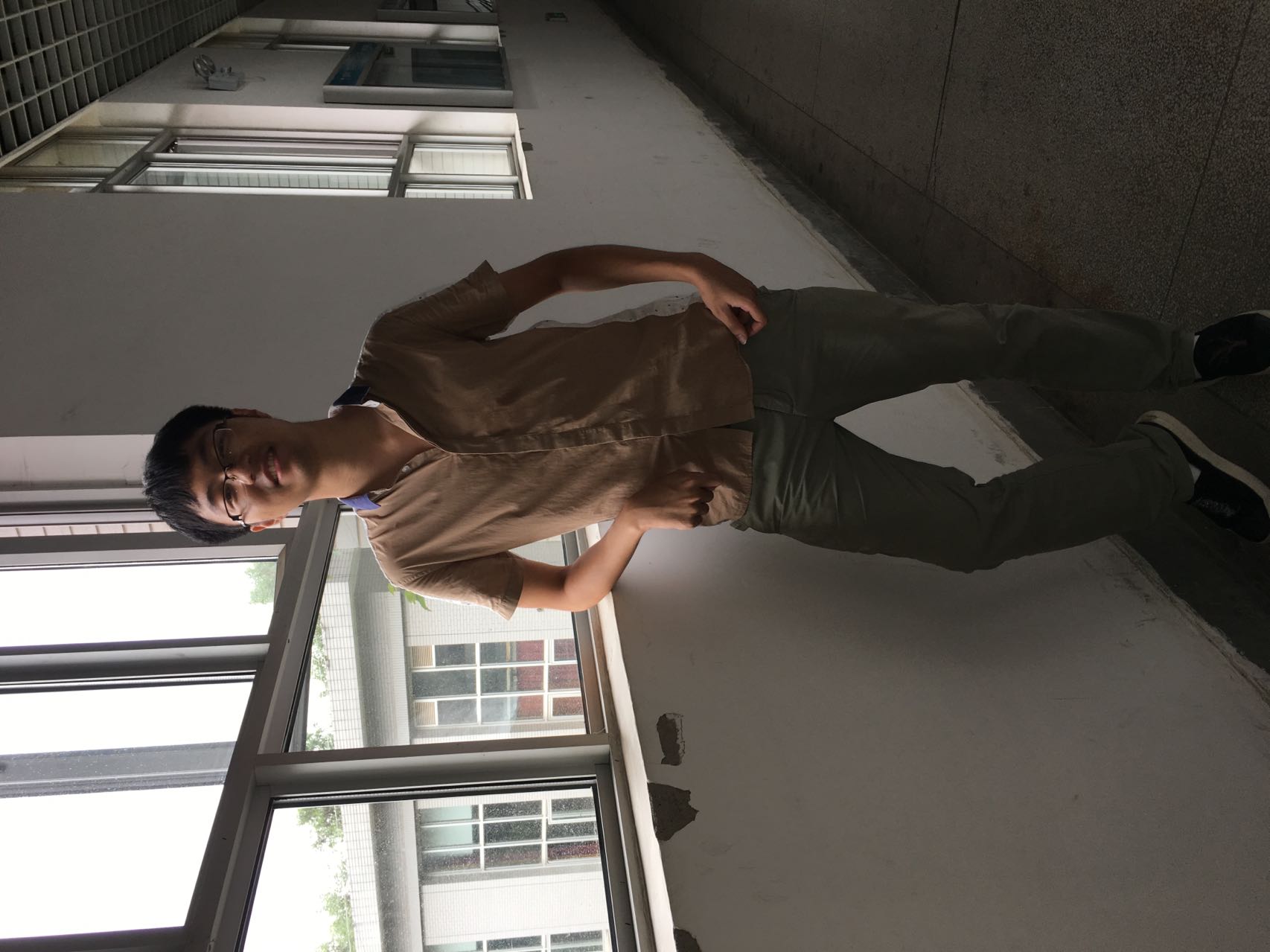Dr. Hakeem Henry
My research interests are in the area of materials for electrochemical energy storage, specifically, new high voltage cathodes for magnesium-ion batteries. I received my Ph.D. in Chemistry from UMD in 2021. I went to Colgate-Palmolive as a postdoctoral Research Scientist after graduation.
Brandon Johnston
I did electrochemical processing and battery electrode development in the Lee Group and received my B.S. degree in 2021. I went to Harvard University as a Chemistry Ph.D. student after graduation.
Darrin Liau
My research interests include molecular layer deposition for energy storage applications, and novel materials for catalysis and electrochemical applications. I received my M.S. in Chemistry from UMD in 2020. I work as an associate Scientist after graduation.
Dr. Emily Sahadeo
My research interests include studying nanostructured energy storage materials for rechargeable Mg batteries. I received my Ph.D. in Chemistry from UMD in 2020. I am now a visiting Assistant Professor at Swarthmore College.
Caleb Luvonga
My area of research interest is in food safety, especially environmental pollutants and other chemical contaminants in food. My current research at NIST is in speciation of organoarsenicals in seafoods for the evaluation of human dietary exposure.
Dr. Nicole Schneck
My research interests lie on the bio/nano interface of the group and I am apart of the UMD-NIST PREP Program. I am currently interested in developing methods to quantify clinically relevant protein biomarkers using magnetic-based immunoaffinity techniques and targeted mass spectrometry. I received my B.S. degree in chemistry and a minor in administrative business from Susquehanna University in Selinsgrove, PA in 2011
Dr. Jaehee Song
My research interests include the design and development of electrical energy storage devices. I am currently focusing on developing high voltage cathode materials for Li-ion battery and investigating the charge storage mechanisms of supercapacitor materials. I received my B.S. in chemistry at the University of Maryland in 2010.
Dr. Eleanor Gillette
My research involves both experiments and computation exploring electrochemical reactions in high aspect ratio nanostructures, especially focused on the mechanisms of charge storage in batteries and supercapacitors. I received my B.S. degree in chemistry from the University of Pittsburgh in 2010.
Dr. Junkai Hu
My research interests include the design and develop of nanostructured materials for the applications in energy fields. I received my B.S. and M.S. degree in chemistry from Fudan University, China.
Dr. Zhe Gui
My research interests includes the design and synthesis of hybrids nanostructured materials for applications in energy storage devices with facilitated charge transfer processes. I received my B.S. degree in chemistry from Wuhan University, China, 2008.
Dr. Lauren Graham
My research interests includes the development of a nanodetoxification system and the synthesis of transition metal nanotubes. My current work focuses on the surface-directed growth mechanism of metal nanotubes during template-assisted electrodeposition. I received my B.S. degree in chemistry from the University of Pittsburgh in 2009.
Jonathon Duay
My research interests include the synthesis of one-dimensional heterogeneous nanowire arrays for high power energy storage applications with an emphasis on the electrodeposition mechanism of these such nanocomposites. I received my B.S. degree in chemistry from Weber State University in Ogden, UT in 2008.
Dr. Thao Nguyen
I've designed and constructed a PEDOT nanotube patch that is capable of fast and controlled transdermal delivery. The theory behind the fast release is the electronic attraction and repulsion between the positive PEDOT backbone and negatively charged model drug molecules. We were able to achieve in vivo release within 10 minutes and drug saturation in the blood system within 30 minutes. The nanotube patch is ideal as a universal drug delivery system since we are able to fine tune the length and wall thickness of the nanotubes and functionalize the nanotubes accordingly, to upload and release drugs of interests.
Dr. Stefanie Sherrill
My research interests include the design and development of electrical energy storage devices. I am currently focusing on heterogeneous nanostructured devices for high energy and high power devices. I received my B.S. in chemistry at the University of Florida in 2007.
Dr. Ran Liu
My research interests are in the template synthesis of nanomaterials and their applications, with an emphasis on developing new approaches to synthesize electrode materials for electrochemical energy storage devices, such as supercapacitors and lithium-ion batteries. For example, my recent publication in JACS develops a one-step method of fabricating coaxial MnO2-PEDOT nanowires. The nano-dimensions and synergic properties of MnO2 and PEDOT enable the coaxial nanowires to have high energy densities at high power densities.
Dr. Xia Bai
My research objective is to investigate the feasibility and transfection efficiency of magnetic silica nanotubes as drug carriers. With the unique tubular structure, the nanotubes can be used to create a diverse set of multifunctional diagnostic and therapeutic devices, such as nanoscale platform. The platform can integrate the functions of therapeutic molecules with targeting, imaging and reporter.
Dr. Bo He
My expertise in nanomaterials synthesis and electrochemistry forms the foundation of my research program. We are in general interested in the synthesis of 1-D nanotubular and nanowire structures with various materials since the 1-D structure has many attributes that other nanostructures do not have. With the fundamental study on the nanotubes, very importantly, we are also interested in application of these various 1-D naostructures at biomedical, materials, and energy fields.
Dr. Rui Xiao
My research interest is mainly focused on the template synthesis of many kinds of nanostructures such as conducting polymers, metals and the mechanism study for the nanostructure synthesis of various polymers. I am also studying the fabrication and characterizations of electrochromic display devices. The nanotube, nanorod of conducting polymers and metals are of very high importance in a lot of domains such as academic, industrial and government.
Dr. Sang Jun Son
Spherical shape of nanoparticles has been used for the most nanobiotechnology because spherical shape is easy to make. However, when multifunctionality is especially required on their surfaces, spherical nanoparticles still need to be improved for controlling multifunctionalization of surfaces, and their environmental compatibility due to the structural limitation of spherical particles. Since it has a single surface, every surface modification for the multifunctionality should take place at the same surface. This may lead to malfunction or interruption between the multifunctional components. In that sense, tubular structure of nanoparticles has become highly attractive for the multifunctional nanoparticles due to their structural attributes, such as the distinctive inner and outer surfaces, over conventional spherical nanoparticles. Inner voids can be used for capturing, concentrating, and releasing species ranging in size from large proteins to small molecules because tube dimensions can be easily controlled by the template synthesis. In addition, inner and outer surface modifications can be performed by totally separated processes so that inner surface modification can be carried out just to satisfy requirement in deliver of biomolecular cargos without any consideration of outer surface
 Dr. Sang Bok Lee is a Professor at the Department of Chemistry and Biochemistry, University of Maryland (UMD), College Park, MD. He received his BS in Chemistry and MS in physical chemistry (surface science and spectroscopy) and PhD in physical organic chemistry (molecular recognition) from Seoul National University, Korea. After finishing his PhD, he worked at a DRAM maker, LG Semicon (Hynix), for two years as senior research engineer and held a postdoctoral position at the University of Florida, before joining UMD in 2002. His research interests include ultrafast electrochromics, supercapacitor, and solar cell device based on the electrochemical synthesis of nanotube structure, and molecular transport, wetting, and diffusion properties of nanotubes and nanotube membranes.
Dr. Sang Bok Lee is a Professor at the Department of Chemistry and Biochemistry, University of Maryland (UMD), College Park, MD. He received his BS in Chemistry and MS in physical chemistry (surface science and spectroscopy) and PhD in physical organic chemistry (molecular recognition) from Seoul National University, Korea. After finishing his PhD, he worked at a DRAM maker, LG Semicon (Hynix), for two years as senior research engineer and held a postdoctoral position at the University of Florida, before joining UMD in 2002. His research interests include ultrafast electrochromics, supercapacitor, and solar cell device based on the electrochemical synthesis of nanotube structure, and molecular transport, wetting, and diffusion properties of nanotubes and nanotube membranes.


